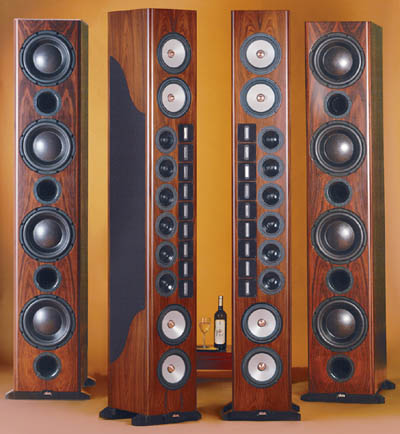
Issue 137 / September 2002
hp's Workshop
HP's Choice: Line Stages

hp's Workshop
HP's Choice: Line Stages

...
The best new components can be terrific mentors. Until Carl Marchisotto's (Alón) Exotica Grand Reference, I hadn't encountered a speaker system with as wide a dynamic envelope as this multi-driver design. The Grand Reference, which is as full-frequency as full-frequency can get, can, except for the lowest notes at its very bottom, reproduce quite wide dynamic contours, micro- to macro --- ppp to fff at any octave. I don't know how to measure or quantity the ability to show the contrasts in dynamics across the frequency spectrum, so I struggle for words to illuminate the concept. If any of the other components in the system are compressing dynamics in any part of the frequency scale, you absolutely will hear that.
There are, also, no measurements that will tell you how a speaker system itself resolves low-level information - in other words, how far down into the noise floor it will reach. The champions at this have been the quasi-full-range electrostatics and, most spectacularly the Beveridge electrostatics (now said to be back, or almost back, in production under the aegis of fils Beveridge). But not one of these designs could encompass big orchestral crescendi and peaks. Likewise, many of the big systems (notoriously the Tympani series of Magneplanars for Audio Research), had to be turned up louder-than-loud to achieve a sense of "life" the true pianissimo simply did not exist therein. And so, while I cannot give you a measurable indicator of the Grand Reference's resolving range in decibels, I can say based on much close listening, that this system's overall dynamic "width" exceeds that of any speaker I've evaluated so far. Beyond that new "frontier" dynamics, there lies the much more elusive goal of "continuousness," which, while not quite as rare as the said-to-be extinct Ivory Billed Woodpecker is as seldom heard as a nightingale in the New World. And just about as difficult to describe in words. (You want to hear the bird itself, listen to the Third Movement of Respighi's Pines of Rome, where you'll hear a recording on a recording.) I've beaten my hard, hard head against the wall trying to create a verbal analogy and have failed. I'm reduced, indeed, to saying something akin to the US Supreme Court justice who said he couldn't define it, but he knew pornography when he saw it. (That is, you'll know it when you hear it.) I liked Sallie Reynolds' comparison of continuousness to a sheet of water: Whatever it is, it creates a musical soundspace that is liquidly seamless from one end of the stage to the other, in a body of air into which each musician is "speaking." The quality of continuousness is not strained, nor was it in evidence with the line stages under review here.
...